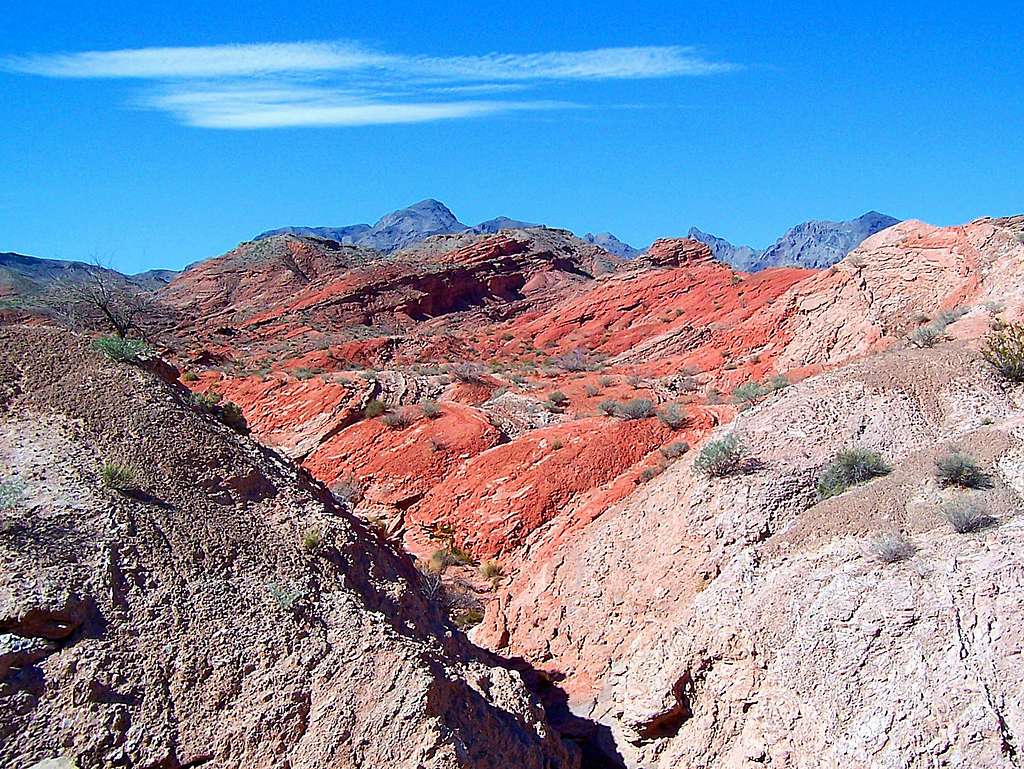
Bleeding rock - Living dirt in NV
Muddy Peak (5,389') in Southern Nevada's Muddy Mountains Wilderness Area is often described by NPS officials as "an extremely strenuous climb." (This is the view of Muddy Peak and Muddy Mountains High Point from the south. They are typically climbed from the north.) Climbers must face sections with high exposure, a high chance of injury or death if you fall, and falling rocks. Helmets are a good idea, as well as carrying water to this arid desert environment.
As you're hiking in, PLEASE stick to the washes or
gullies. Not only are they the easiest and fastest way
to navigate this rugged landscape, traveling in them
will HELP protect the fragile cryptobiotic soils
throughout the valley.
(Enormous networks of fungus, bacteria, mosses, and
lichens STITCH themselves together to create vast
communities of cryptogamic soil, otherwise known as
LIVING DIRT. Scientists estimate that cryptogamic
communities DOMINATE up to 70% of desert soils on the
planet. All of these benefits dissappear, however,
when the seal is broken. When large numbers of people,
animals, and vehicles travel across these soils, they
break down the networks; start erosion, release dust,
and allow invasive plants to take ROOT.)
Also as you're hiking toward your objective, take note
of the beautiful GEOLOGY of this area. The colourful
(RED or ORANGE) sandstone formations are "fossilized
sand dunes" that date back to 250 million years to the
age of the DINOSAURS. The limestone peaks that make up
the Muddy Mountains is much older, dating back as many
as 600 million years. As a rule, younger rocks lie on
top of older rocks. However, Earth's powerful tectonic
forces have cracked, bent, and thrust the limestone
"up and over" the younger sandstone about 65 million
years ago. The thrust fault in Muddy Mountains
Wilderness Area is similar to the Keystone thrust fault
in Red Rock Canyon, on the opposite side of Las Vegas.
I didn't see any, but several Bighorn sheep live in
these desert mountains. Over time, bighorns have
adapted to desert climates, and they do not need to
drink water during the winter, when leafy greens are
available in sheltered canyons. In summer, they must
drink at least once every few days. Their nine-stage
digestive system allows them to get many nutrients
from low-quality food.
The next time you journey out to a remote peak in the
Nevada desert, don't forget to appreciate the "Bleeding
rocks and Living dirt," that are a visible part of our
amazing Earth. Yes, you may have your Snickers Bar, now!!
Muddy Mountains Wilderness Area, due north of
Anniversary Narrows Slot Canyon. (03-31-2008)
